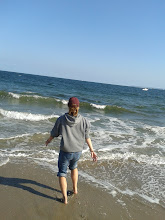Geography:
On the northweastern side of the continent, Mauritania rests on the edge of the Sahara Desert. To the north lies Moracco and Western Sahara, with Mali to the east, and Senegal as the southern boarder. Even within country there is quite a bit of variation in the land. In the south, along the Senegal River there is quite a bit of green vegetation, and the elevation is quite low. As you make your way north and eastward, there is a transition into rolling sand dunes, and then into mountainous terrain before hitting the Sahara Desert. Here in Akjoujt, we are on the very edge of the mountains. You can see them in the distance, and the terrain is anything but flat. The soil is extremely rocky, and you can tell that if we’re not in the mountains, at the very least in the equivalent of the foothills. As you make your way north towards Atar, you get into real mountainous terrain. Then as you continue towards Chinguetti and Ouadane you will climb up the mountains to a plateau. Then you will have Chinguetti, the gateway to the Sahara Desert. The dunes roll right into the city, and apparently the oldest part of the city is buried by sand.
Climate:
Obviously if there is so much variety in the geography, there ought to also be in the climate. Although it is pretty much hot all year round (that’s the African desert for you!), there is a lot more variation in the seasons than you might think. There is definitely a hot season and a cold season that can be seen throughout the country. Some places obviously are hotter, colder or dryer than others, but they all follow a similar schedule. Generally speaking May-August are the hottest months of the year and November-March are the coldest. From July into September, and even October there is a short rainy season (this also varies depending on location). Along the Senegal river, and in the south in general there is a lot more moisture in the air, while as you go north this moisture disappears. In the south (Rosso – where our Stage is held) during the rainy season the streets flood completely and rubber boots are the footgear of choice for everyone. Here in the North, there is still a “rainy season” but it’s “rainy” for the desert. This year it rained 4 or 5 times – but when it rained, it RAINED! Thunder, lighting, you name it! You can add in a nice sandstorm just for good measure too. This year after a few of the rains the streets were flooded just like you would see in the south, but not to the same extent. When we first arrived in country we were headed into the hottest part of the year. I did not have a thermometer at the time, but I believe temperatures would regularly reach about 120. On really hot days the temperature can soar into the 130s. At the end of July up in Atar we had a thermometer and played the “guess the temperature” game. It was a very pleasant evening, having cooled down substantially from the mid-day heat. We all guessed it might be somewhere in the 80s… surprise surprise… it was 105!!! Right now we’re heading into the cold season – you may not think it’s cold, but just remember that everything is relative! So right now we’re seeing temperatures around 95 during the day, but then they’ll dip usually down below 70 at night. The coldest it’s been yet is just about 60 – and I’m telling you after acclimatizing to the summer heat… that is down right COLD! Further north in Atar and Chinguetti it gets even colder. I just spent a night on the dunes in the Sahara (outside Chinguetti) and the temperature was 45. At the peak of the cold season, there may even be frost on the water pipes up in Chinguetti from what I hear! Here though in Akjoujt, it won’t get quite that cold – but I don’t think 40s and 50s will be a stretch. As far as day temperatures are concerned for the cold season, I believe that on the cold days we’ll probably see high 70s to low 80s (but that’s just a guess right now). In Chinguetti now the daytime highs are usually around 80.
One of my neighbors was over one day and inquired what my thermometer was. I didn’t know the word for ‘thermometer’, so I told her that it was something that told me if it was hot or cold. She looked at it, and said… does it say that today is “not bad”? (as she’s sitting in long-sleeves and jeans). It was 98. I laughed and told her, well yeah, it’s not that hot, but people in the USA would think it’s crazy hot, and she wouldn’t believe me! Now when the sun goes down and the temperature starts to go below 85 I usually go inside and get a fleece and maybe some sweats to not get cold. So moral of the story – everything is relative. You may think you’d never be able to stand the heat, but you would acclimatize… everyone else here has!
Pictures:
In the first three pictures you can see the rolling sand dunes of the Sahara Desert, the mountain pass coming down from Chinguetti to Atar, and the Akjoujt watertower sitting on top of a hill.



Next we have another picture of Akjoujt - you can see how rocky the soil is!, Then there is the Senegal River (Mauritania is on the left, Senegal on the right) - it is much greener here, and finally some rolling dunes on the way from Rosso (south) to the capital Nouakchott - much more greenery on the dunes here!




No comments:
Post a Comment